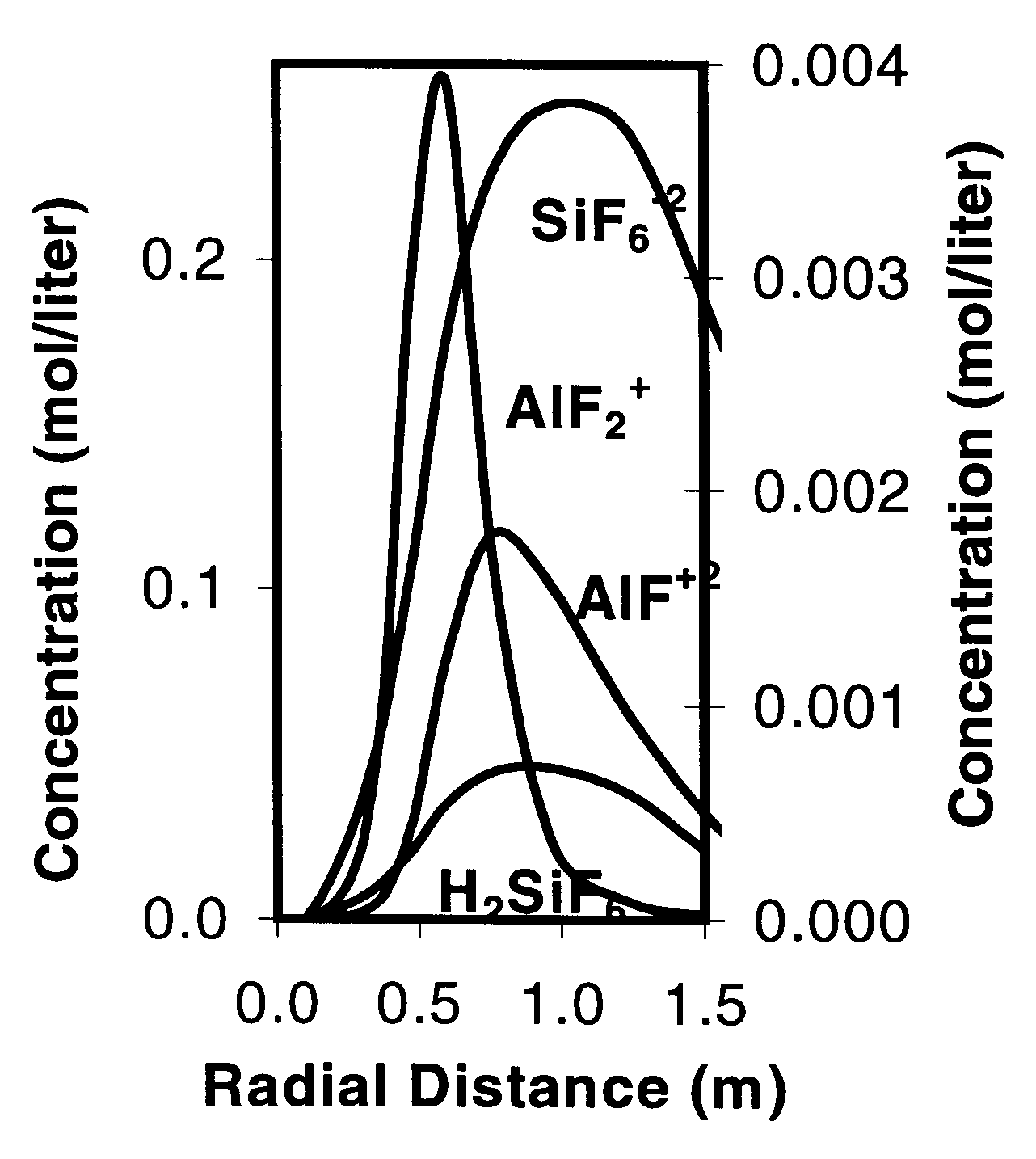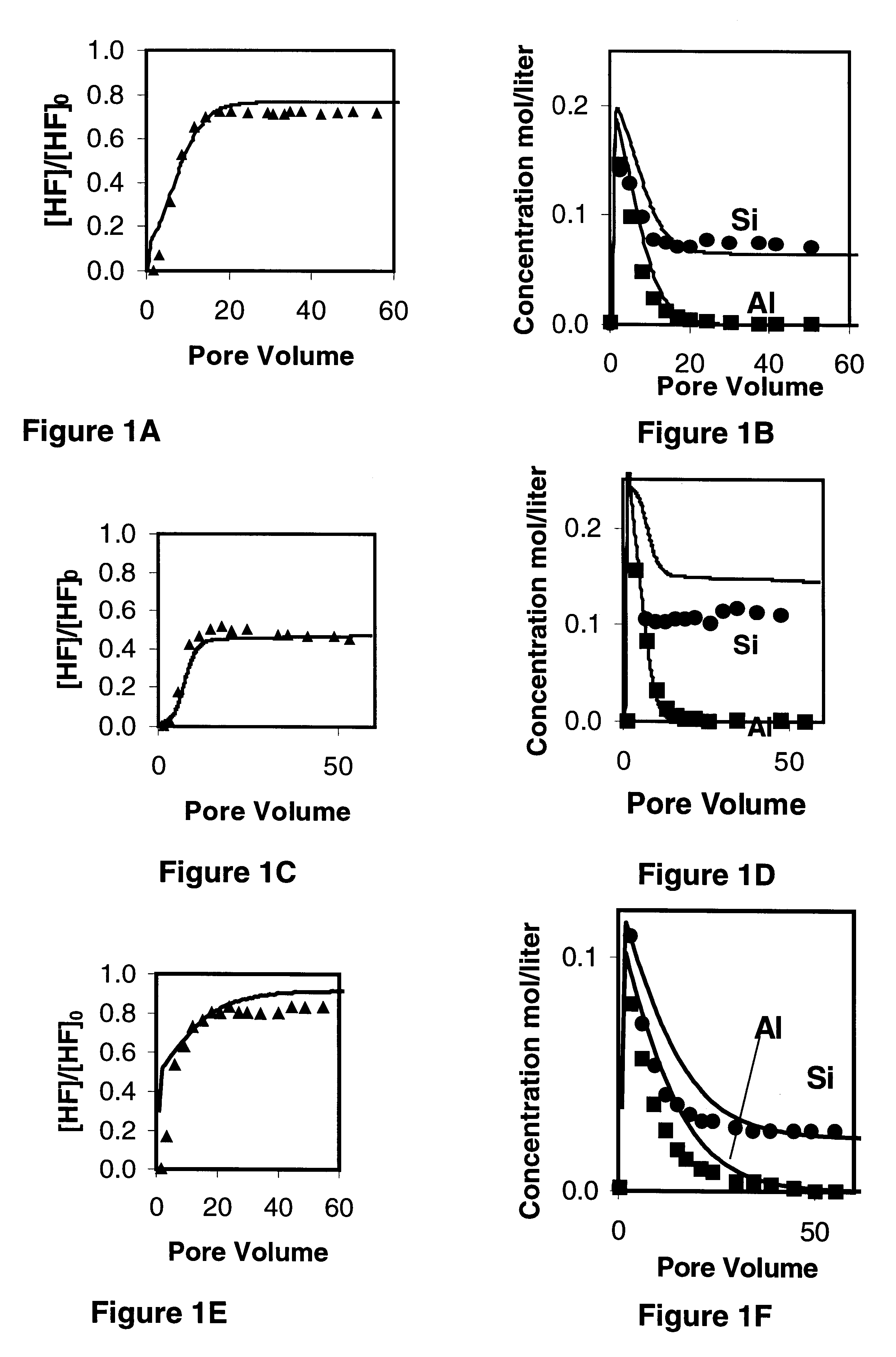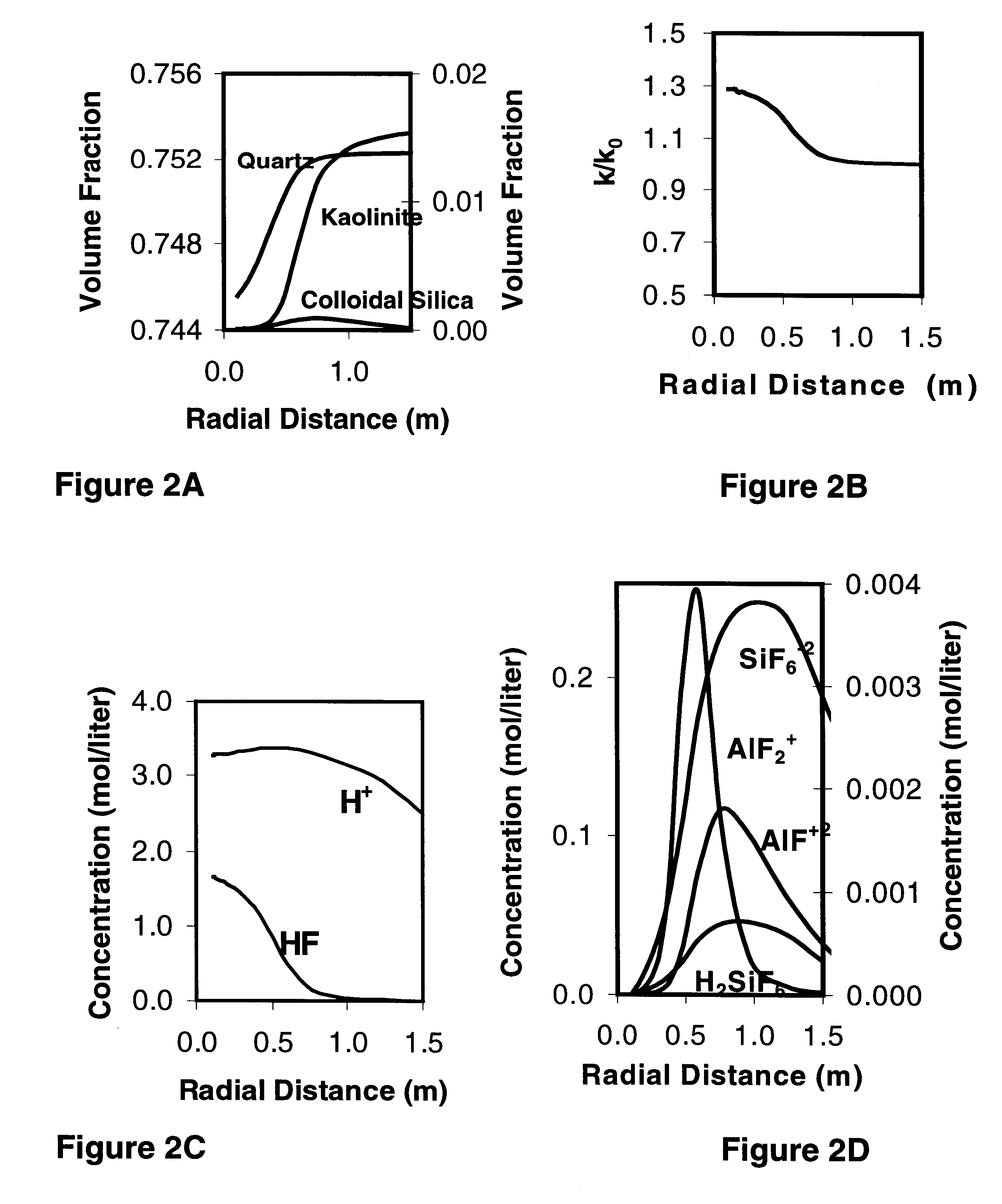Method of optimizing the design, stimulation and evaluation of matrix treatment in a reservoir
a matrix treatment and reservoir technology, applied in the direction of liquid handling, survey, borehole/well accessories, etc., can solve the problems of matrix treatment being a main contributor to reservoir damage, increasing the complexity of treatment fluid recipes, and forming precipitates
- Summary
- Abstract
- Description
- Claims
- Application Information
AI Technical Summary
Benefits of technology
Problems solved by technology
Method used
Image
Examples
Embodiment Construction
The main features of the invention are illustrated in this section by means of a simple application example. The example is based on core test data reported by Hsi et al (IN Hsi, C. D., S. L. Bryant, and R. D. Neira, SPE 25212 Experimental Validation of Sandstone Acidization Models, in SPE International Symposium on Oilfield Chemistry. 1993. New Orleans) for the Endicott Kediktuk sandstone formation in Alaska. The core tests were conducted on damaged cores at 80.degree. C. with 12 / 3 Mud acid. The length and diameter of the core plugs were 7.6 and 2.54 cm, respectively. An inductively coupled plasma (ICP) spectrophotometer was used to measure effluent Al and Si concentrations. The HF concentration in the effluent was measured gravimetrically using the weight-loss method with pre-weighted glass slides. The mineralogy of the Kekiktut formation is 98% Quartz and 2% kaolinite.
FIG. 1 shows a comparison of the measured effluent concentration of HF, Al, and Si with those predicted by the mo...
PUM
| Property | Measurement | Unit |
|---|---|---|
| Temperatures | aaaaa | aaaaa |
| diameter | aaaaa | aaaaa |
| diameter | aaaaa | aaaaa |
Abstract
Description
Claims
Application Information
 Login to View More
Login to View More - R&D
- Intellectual Property
- Life Sciences
- Materials
- Tech Scout
- Unparalleled Data Quality
- Higher Quality Content
- 60% Fewer Hallucinations
Browse by: Latest US Patents, China's latest patents, Technical Efficacy Thesaurus, Application Domain, Technology Topic, Popular Technical Reports.
© 2025 PatSnap. All rights reserved.Legal|Privacy policy|Modern Slavery Act Transparency Statement|Sitemap|About US| Contact US: help@patsnap.com



